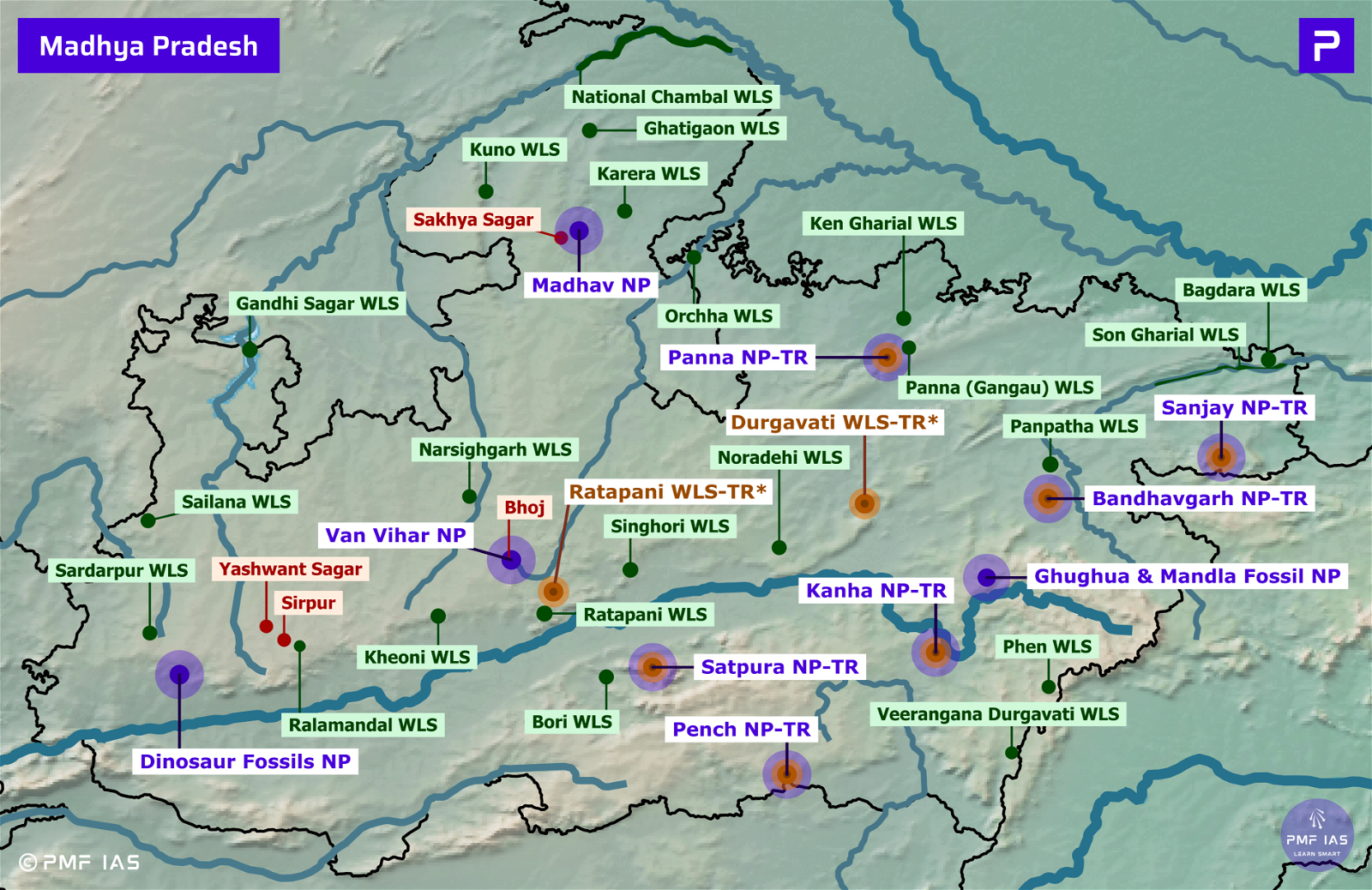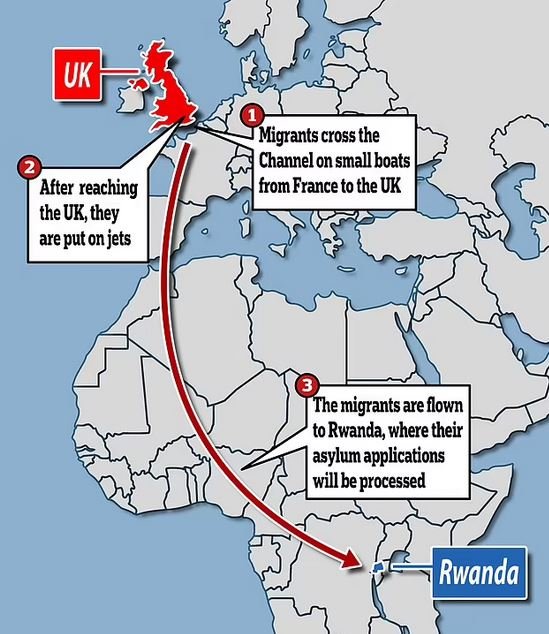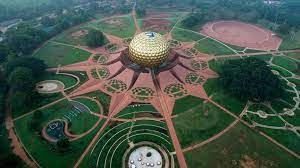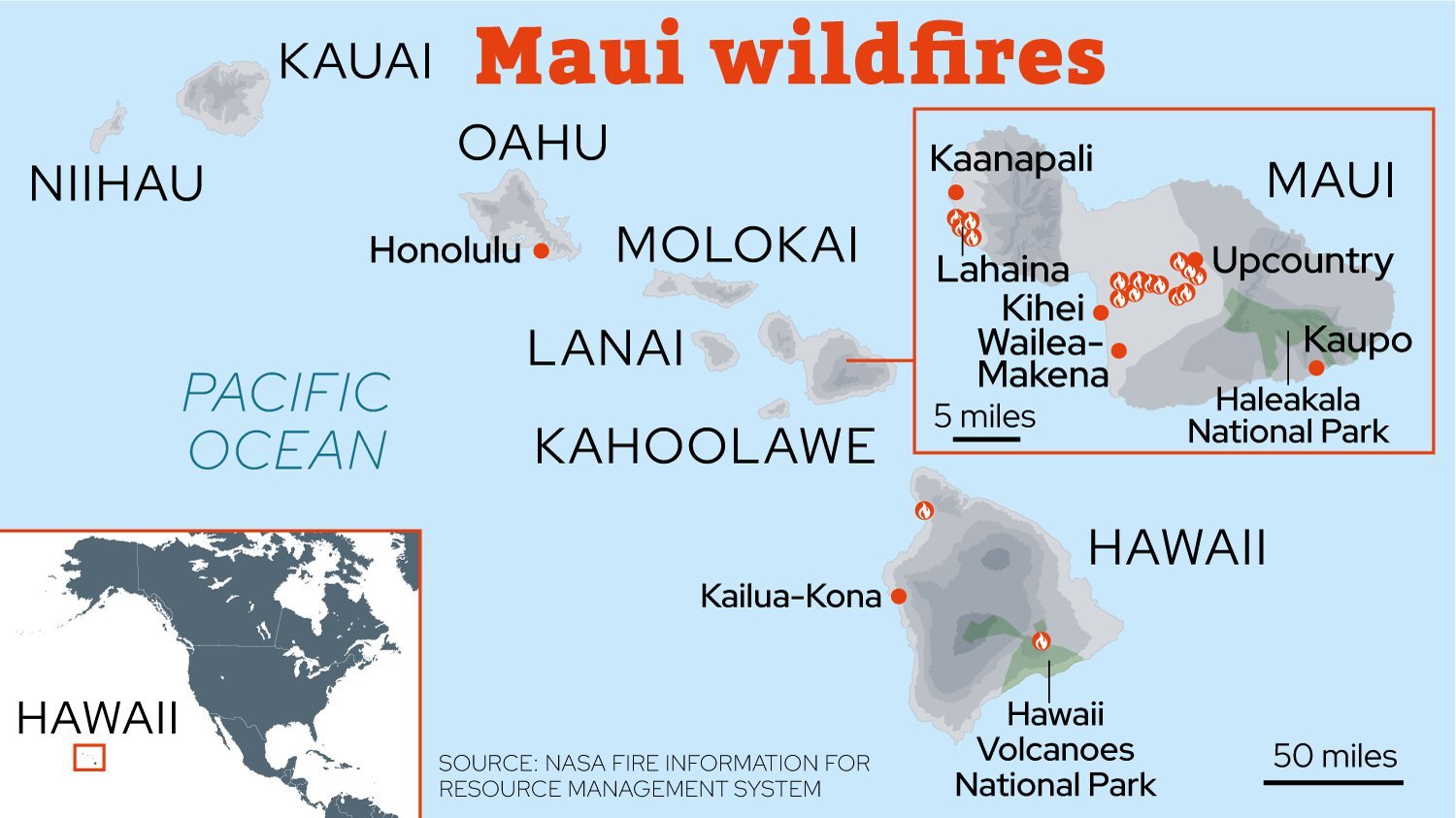
Current Affairs September 23, 2023: Planetary Boundaries, Global Biofuels Alliance, Biofuels, Mission for Integrated Development of Horticulture, Neuralink, Veerangana Durgavati Tiger Reserve, India – China Dispute, “State of Working India” Report, Nasha Mukt Bharat Abhiyaan, AMASR Act, Right to Privacy
Subscribers of "Current Affairs" course can Download Daily Current Affairs in PDF/DOC
Subscribe to Never Miss an Important Update! Assured Discounts on New Products!
Must Join PMF IAS Telegram Channel & PMF IAS History Telegram Channel
{GS3 – Envi – Degradation – 2023/09/23} Planetary Boundaries
- Context (IE | DTE): Six out of nine planetary boundaries have been transgressed because of human-induced pollution and destruction of the natural world.
Planetary Boundaries
- Planetary boundaries are the environmental limits where humanity can safely operate and thrive.
- They set limits on how much humans can be allowed to impact the Earth system.
- They do not represent tipping points or thresholds but show the increased risk.
- Developed in 2009, the framework includes nine planet boundaries believed to capture all of the processes critical for maintaining the Earth’s system state. These boundaries are:
- Biosphere integrity: The health of ecosystems and rate of extinction of species
- Climate change: Atmospheric CO2 concentration and the change in radiative forcing
- Novel entities: Levels of plastic, concrete, synthetic chemicals, gene-modified organisms, etc., that would not be found on Earth if we humans were not here
- Stratospheric ozone depletion: The anthropogenic release of manufactured chemicals that destroy ozone molecules
- Freshwater change: Examination of the human-induced impact on blue water (found in lakes, rivers, and reservoirs) and green water (available in the soil for plants and soil microorganisms)
- Atmospheric aerosol loading: Various particles from anthropogenic emissions that affect cloud formation as well as global and regional atmospheric circulation
- Ocean acidification: Reduction in the pH of the ocean over an extended period of time
- Land system change: Changes in land use, especially the conversion of tropical forests to farmland.
- Biogeochemical flow: Alteration in the natural flows and the forms of nitrogen and phosphorus cycles, which are essential elements for plant growth
|
| Radiative forcing: A measure of the balance of energy from sunlight that hits Earth, in comparison with thermal energy the planet loses. |
Findings of the 2023 Study
- Out of the nine planetary boundaries, humans have breached six: climate change, biosphere integrity, freshwater change, land system change, biogeochemical flows, and novel entities.

- Biogeochemical flow boundary: Although nitrogen and phosphorus are essential for life, their widespread use as crop fertilisers is wreaking havoc by, for instance, triggering algal blooms which results in the formation of ocean dead zones (a reduced level of oxygen in the water).
- Biosphere integrity boundary: It was violated in the last 19th century when acceleration in land use caused a substantial impact on numerous species.
- Freshwater boundary: It was breached last century, between 1905 and 1929.
- Novel entities boundary: It was breached due to the release of unprecedented amounts of synthetic chemicals without adequate safety testing for decades.
- Land system change boundary: It was breached due to land-use conversion, forest fires, and deforestation of the Amazon tropical forest.
- Climate change boundary: The atmospheric CO2 concentration and radiative forcing steadily increase. For instance, CO2 concentration at present is 417 parts per million (ppm). Its safe boundary limit is 350 ppm, breached in the 1980s.
|
Can Earth’s Health Still Recover?
- Yes, it can because planetary boundaries are not like tipping points, they are like warnings.
- Therefore, if humans take positive efforts like do away with fossil fuel burning and end destructive farming, the transgressed boundaries can be brought back into “space operating space”.
- For example, one improving boundary, the stratospheric ozone depletion boundary, is recovering owing to the combined international efforts initiated by the Montreal Protocol in 1987.
{GS3 – Envi – Renewable Energy – 2023/09/23} Global Biofuels Alliance (GBA)
- Context (PIB | TH | TH): PM Modi announced the launch of the Global Biofuels Alliance (GBA) on the sidelines of the G20 Summit.
- GBA is an India-led Initiative to develop an alliance of Governments, International organisations, and industry to facilitate the adoption of biofuels.
- Aim: to position biofuels as a key to energy transition and contribute to jobs and economic growth.
Global Benefits of GBA
- GBA will support the deployment of biofuels by offering capacity-building across the value chain, technical support, and promoting policy lessons-sharing.
- It will facilitate mobilising a virtual marketplace.
- It will also facilitate developing, adopting, and implementing internationally recognised standards, sustainability principles, and regulations.
Benefits of GBA for India
- GBA as a tangible outcome of the G20 presidency, will help strengthen India’s position globally.
- It will focus on collaboration and will provide additional opportunities to Indian industries in the form of exporting technology and equipment.
- It will help accelerate India’s biofuel programmes such as PM-JIVANYojna, SATAT, and GOBARdhan scheme. It will increase farmers’ income and create jobs.
Members of GBA
- Founding Members: USA (52%), Brazil (30%), and India (3%). They produce 85% of global biofuels and consume about 81% of it.
- 19 countries and 12 international organisations have already agreed to join the alliance.
- Seven G20 member countries: Argentina, Brazil, Canada, India, Italy, South Africa, and the USA.
- Four G20 invitee countries: Bangladesh, Singapore, Mauritius, and UAE.
- Eight non-G20: Iceland, Kenya, Guyana, Paraguay, Seychelles, Sri Lanka, Uganda, & Finland.
- 12 international organisations: World Bank, Asian Development Bank, World Economic Forum, UN-Energy for All, Biofutures Platform, International Civil Aviation Organization, International Energy Agency, International Energy Forum, International Renewable Energy Agency, etc.
{GS3 – Envi – Renewable Energy – 2023/09/23} Renewed Focus on Biofuels
What are Biofuels?
- Biofuels are fuels that are derived from biomass/organic matter.
- As biofuels emit less CO2 than conventional fuels, they can be blended with existing fuels to effectively reduce CO2 emissions in the transport sector.
- Examples of biofuel include:
- Solid: Wood, manure
- Liquid: Bioethanol and Biodiesel
- Gaseous: Biogas
Biofuels Generations
- First generation biofuels: They are produced directly from food crops like corn, starch, sugar, etc. They have high carbon content.
- Second generation biofuels: They are produced from non-food crops such as wood, organic waste, and specific biomass crops. Greenhouse gas content is less than 1st generation biofuels.
- Third generation biofuels: They are produced from microorganisms like algae. They are carbon neutral (CO2 Emitted = CO2 Sequestrated).
- Fourth generation biofuels: They are produced from genetically engineered crops.
- They are aimed at not only producing sustainable energy but also a way of capturing and storing CO2. They are carbon negative (CO2 Emitted < CO2 Sequestrated).
|
Biofuels Generation |
|||
| Generation | Feedstock | Production Process | Example |
| First | Food crops | Fermentation, transesterification | Bioethanol, biodiesel |
| Second | Non-food biomass | Thermochemical conversion, biochemical conversion | Cellulosic ethanol, biodiesel from waste vegetable oil |
| Third | Algae | Lipid extraction, fermentation | Biodiesel from algae |
| Fourth | Diverse (including algae, bacteria, & yeast) | Diverse (including thermochemical conversion, biochemical conversion, & direct conversion) |
Biofuels from algae, bacteria, & yeast |
Biofuels as an Alternative to Fossil Fuels
- Experts make a distinction between biofuels and sustainable biofuels.
- The former is derived from food crops such as sugarcane, corn, or soybean, and the latter is from agricultural waste, used cooking oil and processed animal residues like fats.
- The former is referred to as first-generation biofuel, and the latter as second-generation biofuel.
- The sustainable biofuels are considered more as an alternative to fossil fuels for two reasons:
- The greenhouse gas emission of sustainable biofuels is less than biofuels.
- As climate change accelerates, the threat to food security is also increasing. Moreover, there is an increased loss of forests. Hence, sustainable biofuels are more beneficial as they are produced from waste.
- The Global Biofuels Alliance (GBA) has emphasised that its focus will be to develop second-generation biofuel.
Why is there a Renewed Focus on Biofuels?
Disruptions to Global Crude Oil Supplies
- With severe disruptions to global crude oil supplies following the Ukraine war, several countries have been scrambling to find alternatives to the import dependence on petrol and diesel.
- India, for instance, imports 87% of its crude oil, and it is its main reserve currency expenditure.
- In such a situation, second-generation biofuel seems to be a good alternative for import substitution.
Reducing Carbon Emission from the Transport Sector
- With transport accounting for about one-quarter of global carbon emissions, there have been renewed attempts to accelerate the decarbonising of this sector.
- Several countries are announcing battery production and electric vehicle (EV) policies. Also, legacy automakers are entering the now thriving EV sector.
- But some modes of transport like aviation, shipping, and long-haul trucking will find it harder to reduce carbon emissions by converting to EV mode.
- Therefore, some experts feel that second-generation biofuel can be a valuable substitute.
Shortcomings of Electric Vehicles (EV)
- Some experts feel that accelerating EV adoption and developing alternatives like green hydrogen must be the focus of the ongoing energy transition.
- But others argue that second-generation biofuel is better because it reduces carbon emissions and stretches the life of internal combustion engines used in conventional cars.
- The technology to develop EV vehicles is costly, so its adoption by the general public will be slow.
Income Generation for Farmers
- An estimated 1.1 billion people are engaged in agriculture around the world.
- In India, more than 50% of the population is engaged in agriculture.
- Second-generation biofuels are produced from agricultural wastes, and so their production will uplift the income level of farmers.
{GS3 – Agri – Crops – 2023/09/23} Kamalam (Dragon Fruit)
- Context (PIB): Kamalam (Dragon Fruit) cultivation area in India expected to expand under the Mission for Integrated Development of Horticulture (MIDH).
Kamalam (Dragon Fruit)
- Dragon fruit is an herbaceous perennial climbing cactus widely known as Pitaya.
- It has its origin in Mexico, Central America, and South America.
- It is widely cultivated throughout the tropical and sub-tropical world.
- It is also known as “Wondrous Fruit of the 21st century”.
- It has recently drawn much attention worldwide because of its economic value as a food product due to its enormous health benefits.
- In India, the cultivation of Kamalam is fast picking up in Karnataka, Kerala, TN, Maharashtra, Gujarat, Chhattisgarh, Odisha, West Bengal, Andhra Pradesh, A&N Islands, Mizoram, and Nagaland.
- But they cannot meet the domestic demand. Hence, most dragon fruits available in the Indian market are imported from Thailand, Malaysia, Vietnam, and Sri Lanka.
Benefits of Kamalam Cultivation
- Dragon fruit provides fast return with economic production in the first year after planting, and full production is attained in 3-4 years.
- The life expectancy of the crop is about 20 years, with a high benefit-cost ratio (BCR).
{GS2 – MoAFW – Schemes – 2023/09/23} Mission for Integrated Development of Horticulture (MIDH)
- MIDH Mission is a centrally sponsored scheme for the holistic growth of the horticulture sector, covering fruits, vegetables, root & tuber crops, mushrooms, spices, flowers, aromatic plants, coconut, cashew, cocoa, and bamboo.
Objectives of MIDH
- To promote holistic growth of the horticulture sector through area-based regionally differentiated strategies in consonance with the comparative advantage of each State/region
- To encourage farmers to form groups like FIGs/FPOs and FPCs to bring economy of scale
- To enhance horticulture production, augment farmer’s income, and strengthen nutritional security
- To improve productivity by way of quality germ-plasm, planting material and water use efficiency
- To support skill development and create employment generation opportunities for rural youth
Schemes of MIDH
| Schemes of MIDH | Target Area/Area of Operation |
| National Horticulture Mission (NHM) | All states and UTs except states in NE and Himalayan States |
| Horticulture Mission for North East & Himalayan States (HMNEH) | NE and Himalayan States |
| National Horticulture Board (NHB) | All states and UTs |
| Coconut Development Board (CDB) | All coconut growing states |
| Central Institute for Horticulture (CIH) | NE states |
Ratio of Centre-State Contribution Under MIDH
|
Ratio of Centre-State Contribution Under MIDH |
||
| Regions/States/Areas | Centre (in %) | State (in %) |
| All states except states in North East and the Himalayas | 60 | 40 |
| North East and the Himalayan States | 90 | 10 |
| Schemes of MIDH | Centre (in %) | State (in %) |
| National Horticulture Board (NHB) | 100 | – |
| Coconut Development Board (CDB) | 100 | – |
| Central Institute for Horticulture (CIH) | 100 | – |
| Agency | Centre (in %) | State (in %) |
| National Level Agencies (NLA) | 100 | |
{GS3 – S&T – Tech – 2023/09/23} Neuralink
- Context (TOI I MINT): Neuralink, headed by Elon Musk, is pioneering the development of brain implant technology.
- The company’s vision is to use minuscule brain implants to manipulate neural signals, effectively converting thoughts into actions through a wireless app.
- Brain-computer interfaces (BCIs) utilise tiny brain chips to read and transmit brain signals for various applications, including aiding paralysed individuals.
- Certain BCIs employ structures filled with sensors for signal detection, showing positive results in treating conditions such as depression.
Challenges and Progress in BCI Technology
- Invasive BCIs, such as those developed by Neuralink, face regulatory hurdles and data requirements (clinical trials). As a result, non-invasive BCIs are seeing rapid progress.
{Prelims – PIN India – PAN – TR – 2023/09/23} Veerangana Durgavati Tiger Reserve
- Context (TOI I TI): The Veerangana Durgavati Tiger Reserve is the latest addition to India’s tiger reserves, marking the 54th in the country and 7th in Madhya Pradesh.
- Location: The reserve is spread across the Sagar, Damoh, and Narsinghpur districts of MP.
- Area: It covers an area of 2,339 Km2.
- Wildlife Sanctuaries: The reserve includes areas within the Nauradehi Wildlife Sanctuary and Durgavati Wildlife Sanctuary.
- Connectivity: A green corridor linking Panna Tiger Reserve with Durgavati will be developed for the natural movement of tigers to the new reserve.
- Rivers: Parts of the reserve fall under the Narmada and Yamuna River basins.
- Historical Significance: The Singorgarh Fort is located within the reserve.
- Vegetation: The reserve is characterised by dry deciduous type vegetation.

{GS2 – IR – India-China – 2023/09/23} India – China Dispute
- This was after three athletes from Arunachal Pradesh were denied accreditation cards and instead offered stapled visas by China.
- Accreditation cards have the dual purpose of being an ID card for the Asian Games as well as a visa.
Stapled Visa
- A stapled visa is an unstamped paper attached to a passport page, which can be detached easily.
- This differs from a regular visa that is affixed and stamped by the issuing authority.
- China issues stapled visas to Indian nationals from Arunachal Pradesh and J&K, a practice that challenges India’s authority over these regions.
- However, the Indian government does not recognise these visas as valid.
India – China Border Dispute
- The India – China Border is the second longest border of India, next to Bangladesh.
- Five Indian states, namely J&K, Himachal Pradesh, Uttarakhand, Sikkim and Arunachal Pradesh touch the Indian boundary with China.
- The Sino-Indian border is generally divided into three sectors:
- Western sector
- Middle sector
- Eastern sector

The Western Sector
- Separates J&K from the Sinkiang (Xinjiang) province of China.
- The western sector boundary is largely the outcome of the British policy towards J&K.
- China claims the Aksai Chin district, the Changmo valley, Pangong Tso and the Sponggar Tso area of north-east Ladakh as well as a strip of about 5,000 sq km down the entire length of eastern Ladakh.
- China also claims a part of the Hunza-Gilgit area in North Kashmir (ceded to it in 1963 by Pak).
The Middle Sector
- Two Indian states Himachal Pradesh and Uttarakhand touch this border.
The Eastern Sector
- The 1,140 km long boundary between India and China runs from the eastern limit of Bhutan to a point near Diphu Pass (Talu Pass) at the trijunction of India, Tibet and Myanmar.
- This line is usually referred to as the Mc Mahon Line after Sir Henry Mc Mahon, then foreign secretary of British India, who negotiated the boundary agreement between Great Britain and Tibet at Shimla accord in 1913-14.
Asian Games
- The Asian Games, also known as Asiad, is a multi-sport event held every four years, second in size only to the Olympics.
- The games are organized by the Olympic Council of Asia (OCA) & have 45 participating countries.
- The 19th edition is being held in Hangzhou, China from September 23 to October 8.
- The inaugural Asian Games were held in New Delhi in 1951, with participation from 11 countries.
- The games were advocated by Nehru, the first PM of India, to reestablish bonds between Asian countries through sports and contribute to lasting peace in Asia.
{GS3 – IE – Employment – 2023/09/23} “State of Working India” Report 2023
- Context (TH I IE): The ‘State of Working India 2023’ report published by Azim Premji University’s Centre for Sustainable Employment, examines India’s employment dynamics.
Changing Employment Dynamics
Accelerated Structural Transformation
- India generated 3 million regular-wage jobs annually from 2004 to 2017, with a surge to 5 million regular-wage jobs annually between 2017 and 2019.
- However, the pace slowed since 2019 due to the economic slowdown and the pandemic.
Enhancing Upward Mobility
- In 2004, 80% of sons of casual wage workers, including SC/ST workers, were in casual employment.
- By 2018, this improved significantly, dropping to 53% for non-SC/ST castes and 76% for SC/ST castes, with better job opportunities emerging.
Caste-based Labor Segregation
- Between 1983 and 2021, the proportion of SC workers in regular-wage jobs increased.
- In 2021, 32% of general caste workers had regular wage jobs, while it was 22% for SC workers, with general castes more prevalent in larger enterprises.
Gender-Based Wage Disparities
- In 2004, female salaried worker earned only 70% of their male counterpart’s income.
- By 2017, this disparity had narrowed, with women earning 76% of what men did.
- However, from 2017 onwards, the gender pay gap remained stagnant, persisting through 2021-22.
Unemployment Trends
- In the post-Covid era, the report suggests that the unemployment rate in India is lower than pre-Covid levels across all education levels.
- However, it raises concerns about the unemployment rate for graduates, which remains above 15%, and even more alarmingly, reaches a staggering 42% among graduates under 25 years of age.
Growth and Employment Nexus
- The report finds that since the 1990s, non-farm GDP growth and employment growth aren’t correlated, indicating rapid economic growth doesn’t guarantee job creation.
- However, between 2004 and 2019, there was a positive link between economic growth and decent employment creation in India.
Influence of the Male Breadwinner Norm
- The report notes that due to the “male breadwinner” norm, a wife’s employment likelihood decreases as her husband’s income rises, especially in rural areas.
{GS2 – MoSJE – Schemes – 2023/09/23} Nasha Mukt Bharat Abhiyaan (NMBA)
- Context (PIB): Recently, an MoU was signed between the Ministry of Social Justice and Empowerment (MoSJE) and the All World Gayatri Parivar.
- Nasha Mukt Bharat Abhiyaan (NMBA) was launched by the MoSJE in 2020.
- It was started in 272 identified vulnerable districts with high drug usage.
- These vulnerable districts were identified based on findings from the national survey and the inputs provided by the Narcotics Control Bureau (NCB).
- Its goal is to create a drug-free India or significantly reduce drug addiction and substance abuse problems in the country.
- It aims to create awareness about the ill effects of substance abuse among the youth.
Objectives
- NMBA intends to spread awareness about substance abuse through various activities like:
- Awareness generation programmes
- Focus on higher educational institutions, university campuses and schools
- Community outreach and identification of dependent population
- Focus on counselling and treatment facilities in hospitals and rehabilitation centres
- Capacity Building programmes for service providers
Components
- Preventive measures: Aimed at educating the public about the dangers of drug abuse.
- Treatment: Expanding access to addiction treatment and rehabilitation services.
- Awareness Campaigns: To inform citizens about the consequences of drug abuse and the available support and treatment options.
- Community Engagement: To combat drug addiction through support groups and community-based programs.
- Collaboration with stakeholders such as NGOs, healthcare providers, law enforcement agencies, and educational institutions.
Achievements
- NMBA has reached over eleven crore people through various on-ground activities.
- More than three crore youth actively participated in NMBA activities against substance abuse.
{GS2 – MoCulture – Laws – 2023/09/23} AMASR Act
- Context (TH): The Parliamentary Standing Committee on Transport Tourism and Culture has asked the government to:
- Revise the construction rules around protected ASI monuments.
- Rationalise and categorise all 3,691 ASI-protected monuments.
- At present, the same rules apply to significant and insignificant monuments.
- Ancient Monuments and Archaeological Sites and Remains (AMASR) Act, 1958:
- Regulates the preservation of ancient and historical monuments and archaeological sites.
- Provides for regulating archaeological excavations and protecting sculptures, carvings, etc.
- The Archaeological Survey of India (ASI) functions under the provisions of this Act.
Prohibited and Regulated area
- The amendment in 2010 provided the 100-metre prohibited area and 300-metre regulated area around all monuments protected by the Archaeological Survey of India (ASI).
- It prohibits and regulates all activities like mining and construction around 100 meters and 300 meters, respectively.
|
AMASR (Amendment) Bill 2017
- The AMASR (Amendment) Bill was passed by the Lok Sabha in 2017. However, the Bill was referred to a select committee in the Rajya Sabha, which submitted its report in 2018.
- The amendment bill includes provisions allowing the government to take up infrastructure projects within prohibited areas around protected monuments.
{GS2 – Polity – IC – FRs – 2023/09/23} Right to Privacy
- Context (TH): The Delhi HC granted ex-parte an omnibus injunction restraining 16 entities from using Anil Kapoor’s name, likeness, and image commercially.
|
Personality right
- The name, voice, signature, images, or any aspect of personality easily identified by the public are markers of a celebrity’s personality and are referred to as “personality rights.”
- Personality rights or their protection are not expressly mentioned in a statute in India.
- They are based on the right to privacy and the right to property.
- Many concepts in intellectual property rights used to protect trademarks can be applied while deciding whether a celebrity deserves to be protected.
- In 2015, the Madras HC said, “Personality rights belong to people who are famous.”
|
{GS3 – Envi – Conservation – 2023/09/23} Rhino
- Context (HT): World Rhino Day is celebrated on September 22 every year.
- Five species of rhinoceros are:
- White Rhino
- Black Rhino
- Sumatran Rhino
- Javan Rhino
- Greater One-Horned Rhino (Indian Rhino)
- Only the Greater One-Horned Rhino is found in India.
The Greater one-horned rhinoceros (Rhinoceros unicornis)
- It is exclusively distributed within the geographical boundaries of India, Nepal, and Bhutan.
- The worldwide population of this rhino is about 4,000, with more than 3,000 living in India.
- Kaziranga National Park has more than 2,500 rhinoceros.
Indian Rhino Vision 2020 (IRV2020)
- It was an initiative of the Assam Government, WWF India, and other organisations.
- It was started in 2005 to increase the rhino population in Assam to 3,000.
- It aimed to establish the rhino population in seven protected areas in Assam.
- Because of IRV2020, rhinos are now found in four Protected Areas in Assam:
- Kaziranga National Park
- Manas National Park
- Orang National Park
- Pobitora Wildlife Sanctuary





![PMF IAS Environment for UPSC 2022-23 [paperback] PMF IAS [Nov 30, 2021]…](https://pmfias.b-cdn.net/wp-content/uploads/2024/04/pmfiasenvironmentforupsc2022-23paperbackpmfiasnov302021.jpg)











